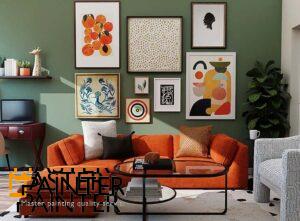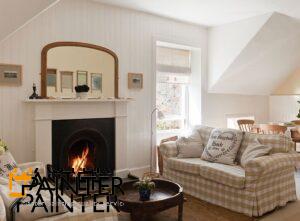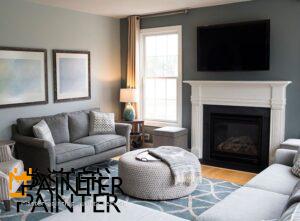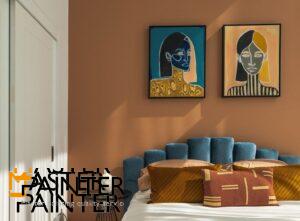Understanding Focal Points in Living Room Design

In the realm of design, the concept of a focal point is frequently discussed. This fundamental principle extends beyond just interior design, influencing areas such as photography, art, and even fashion—think about it, you might be unconsciously considering it when selecting your outfit in the morning! But what exactly is a focal point?
Essentially, a focal point is the element in a space—be it an image, a room, or a key piece of clothing—that captures attention. In a living room context, it refers to the area that stands out most prominently, often due to its dramatic nature compared to surrounding elements. For instance, imagine entering a stark white room with only a large window; that window becomes the focal point because it draws your gaze first.

Here’s an interesting insight: you can incorporate multiple focal points! Many living rooms naturally feature several elements that attract the eye. For example, you might have a large picture window on one wall, a fireplace on another, and an eye-catching sofa. You don’t have to limit yourself to highlighting just one. Consider how these elements interact and plan your layout accordingly. As you enter the room, one feature may catch your attention, but when you take a seat, your focus might shift to another element across the space. Arranging furniture thoughtfully can emphasize multiple features simultaneously, and the use of color can also enhance this effect.

Now that you understand what a focal point is, the next question is how to identify them in your living room. Start by examining the built-in features of the space. Look at the walls; typically, living rooms have one or two full walls without interruptions from doorways or closets, making them ideal candidates for focal points. You can accentuate these walls using wallpaper, bold paint colors, or decorative objects like art or mirrors.
Fireplaces are another excellent built-in feature that can serve as a focal point. If you have a mantle, consider using paint or varied finishes to make it stand out. You can also place a TV or an interesting piece of artwork above it to draw even more attention. Fireplaces naturally disrupt solid wall spaces and add texture, making them a natural focal point.
Windows can also act as focal points, especially large ones with beautiful views. If your window is located opposite the entrance, it will naturally attract attention, requiring minimal enhancement. For smaller windows, consider turning them into feature walls or positioning a statement piece of furniture in front to make them more prominent.
Focal points are also influenced by the room’s intended use. These elements may not be built-in but are essential for your activities in the space. If you have a large screen TV, arrange your furniture to face it and incorporate interesting decorative elements around it, perhaps placing it atop a stylish shelving unit with decorative items below.
Creating Feature Walls as Focal Points

One of the most effective methods for establishing a focal point is by introducing bold colors into the room. Select one wall to highlight while keeping the other walls in more subdued, neutral tones. This could involve transforming a plain wall with vibrant wallpaper or a striking paint color that complements a piece of art or enhances the visual appeal of your sofa.
When choosing the right color for your feature wall, consider a few of your favorite items in the room and select a hue that harmonizes with them. If the chosen wall includes built-in features like a fireplace mantle or shelves, decide whether you want to paint these elements in a contrasting color to make them pop or blend them in more subtly.
If your living room contains multiple focal points, use color strategically to guide the viewer’s gaze. For instance, if a large window at the back of the room immediately draws attention upon entry, you might opt for a muted color on that wall. Reserve bolder colors for the next focal point you want to highlight, such as a fireplace or the wall with the TV.
